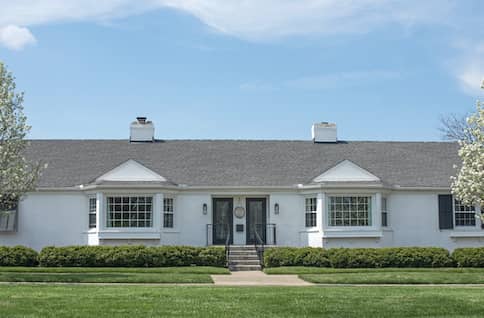The gross rent multiplier (GRM) gives real estate investors a way to determine the value of a property and compare it to other rental properties on the market. Although there are limits to what the GRM can tell you, it’s still a good way to do a basic assessment of a property.
If the GRM is too high compared to other properties in the same area, it could indicate the property isn’t a good investment.
What Is Gross Rent Multiplier?
The gross rent multiplier (GRM) is a tool investors use to evaluate an investment property by looking at the potential rental income. GRM is expressed as a ratio of the current market value or sale price of the rental property and the annual gross rental income for easy comparison between comparable properties.
GRM helps real estate investors calculate how profitable different rental properties may be based on their gross annual rental income. It’s a helpful formula to use when the market is changing quickly, in addition to looking at fair market comparables.
See What You Qualify For
Buy A Home
Discover mortgage options that fit your unique financial needs.

Refinance
Refinance your mortgage to have more money for what matters.
Tap Into Equity
Use your home’s equity and unlock cash to achieve your goals.
Gross Rent Multiplier Formula
So now that you understand what GRM is, how do you put it to practical use? Let’s look at the formula for calculating GRM and how to know what a good gross rent multiplier is.
How To Calculate Gross Rent Multiplier
Here’s the formula you’ll use to calculate the gross rent multiplier:
- Gross Rent Multiplier = Property Price (or current market value) / Gross Rental Income
Let’s say you’re considering investing in a multifamily property but want to know the GRM first. The property price is $2 million, and the gross rental income is $350,000, giving you a GRM of 5.71. In general, a lower GRM will bring in more income over time.
Of course, in some scenarios, you may not know the property’s estimated annual gross rental income. In this situation, you’d need to do more research and see what comparable properties are charging for rent.
What Is A Good Gross Rent Multiplier?
A good gross rent multiplier is usually between four and seven, as this indicates the property is well-priced. If the GRM is too high, that indicates the seller is asking too much for the property. In the example above, the GRM would be considered good, since it falls in that range.
Is GRM Different From Cap Rate?
Yes, the GRM and capitalization rate are two different tools used in real estate valuations. The GRM is used to estimate the value of an income-producing property based on the gross rental income. It’s a simple way to compare the income potential of several different properties but doesn’t consider the expenses, financing costs or vacancy rates that may come with the property.
The cap rate is also used to determine the potential return on investment (ROI) of a property, but it does this by dividing the net operating income (NOI) by its current market value (or sale price). And a high cap rate suggests a higher return on investment. Since the cap rate considers both the income generated by a property and its operating expenses, it’s a more comprehensive way to measure profitability.
The Bottom Line
The gross rent multiplier provides an easy way to compare multiple properties. It can help you understand whether that property is a good investment or whether you should keep looking.
However, the GRM is only a starting point since it doesn’t consider the operating expenses and should be used alongside other investing tools.
Take the first step toward buying a house.
Get approved to see what you qualify for.

Jamie Johnson
Jamie Johnson is a Kansas City-based freelance writer who writes about a variety of personal finance topics, including loans, building credit, and paying down debt. She currently writes for clients like the U.S. Chamber of Commerce, Business Insider and Bankrate.












